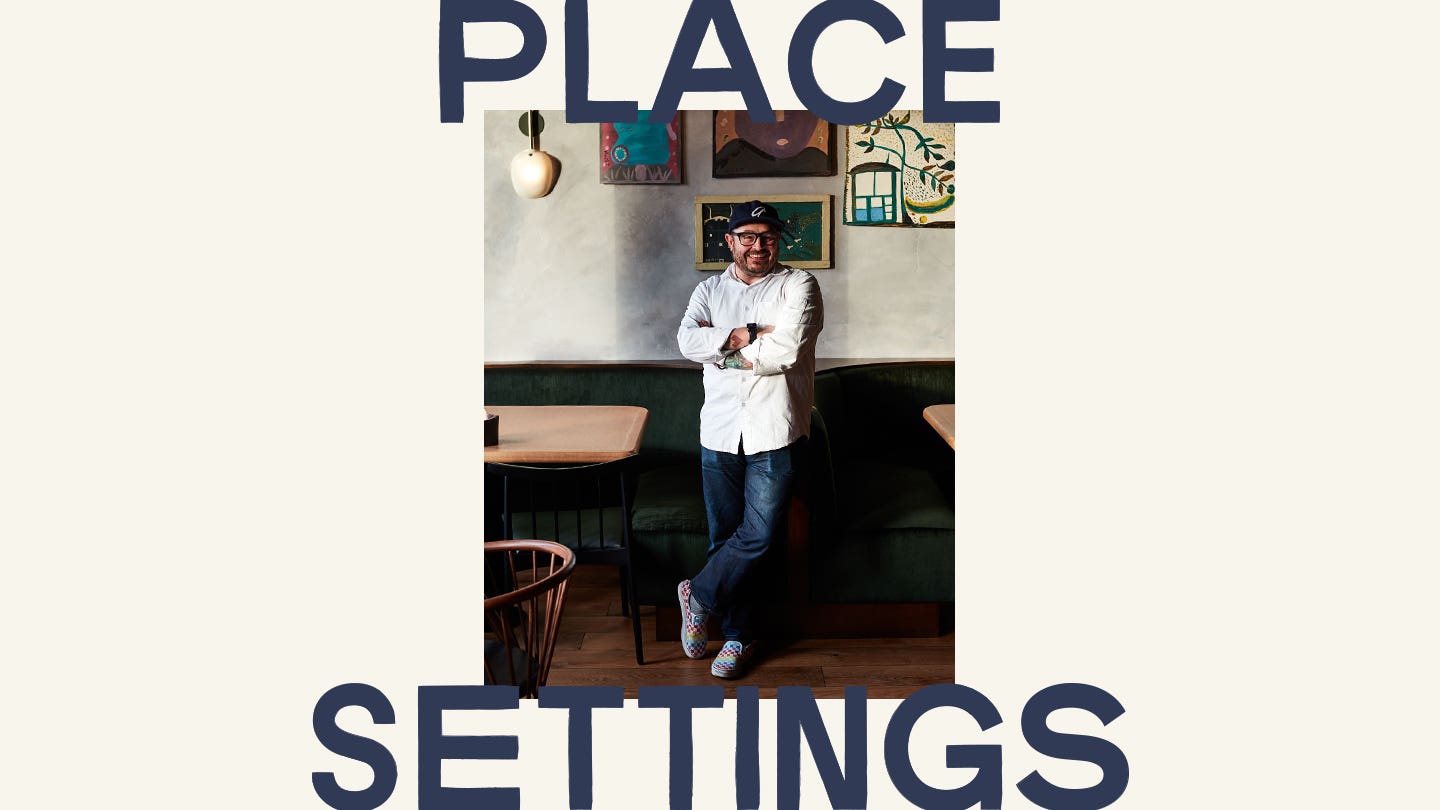
Sean Brock on Why All Restaurants Might Need a Meditation Room, and Geeking Out in His Food Lab in Nashville
The celebrated Southern chef and cookbook author chats with us on this week’s episode of Place Settings.

Welcome to our new podcast, Place Settings. This season, we’re traveling across the U.S. to meet the chefs, farmers, makers, and creatives who are transforming the food space through their unique connection to a place. Tune in each week, as our editors chat with a food innovator whose personal journey is as compelling as what they’re putting on the plate.
Nashville-based award-winning chef and bestselling cookbook author Sean Brock has been busy over the last two-and-a-half years. He launched four restaurants—Joyland, The Continental, and his most personal project to date: a duo of restaurants called Audrey and June. Named after his grandmother Audrey (whose middle name was June), the spaces take up both floors of a sweeping A-frame building that’s inspired by the tobacco barns of Brock’s native Appalachia. Together, they’re an ode to his childhood in Virginia and to the woman who forever shaped him as a chef and as a person. But they’re also a portal into the future of food—building on Brock’s research and culinary wizardry from over a decade of leading kitchens across the South, most notably at Husk. His passion for preserving Southern foodways and endless curiosity about food science continues. But now, as you’ll hear on this week’s episode, the father-of-two takes a more mindful approach with a deeper purpose. Here are a few more highlights from our senior editor Ellen Fort’s conversation with him:
On His Grandmother Feeding His Passion for Cooking
“My grandparents loved watching the old TV shows: Justin Wilson, Jacques Pepin, Julia Child, Yan Can Cook, and great chefs on the Discovery Channel. Once I saw that you could do this as a profession, I was fascinated. I can remember sitting on the couch watching these chefs in these stainless shiny kitchens—with the hum of the hood and the copper pots and the sharp knives—and realizing they were cooking Michelin three-star food in places just as rural as where I grew up. When I saw that, I wanted to start doing more of the things that chefs would do. [My grandmother] got me a knife and let me chop things. [...] I fell in love with Chinese cooking, because we ate Appalachian food every night (there were no restaurants in my town), and she bought me a hand-hammered wok off those late-night infomercials. I still have it. I still cook in it. My childhood was just full of stories like that around food and discovery.”
On Balancing Preservation with Innovation
“When you walk into the restaurant and see a lab, you probably start assuming and envisioning cauldrons bubbling away in test tubes. But this lab is a fully functional preservation kitchen. Its purpose is to explore every ingredient that walks through this building with the time and care it takes to discover these hidden flavors. Once a week, we gather a list of the best products available within this area, we get them in, taste them, play with them, and create the dish around them. Let's say it's candy roaster squash. [...] The lab can produce powders, syrups, hydrocells, extracts, amino acid solutions–and have salty, sweet, sour, and umami versions. We now have a full pantry built around just the candy roaster squash, so I can then almost hyper season it with itself. [...] The lab allows us to present the most simple-looking candy roaster squash on the plate. But it will blow your mind how complex and interesting it is to eat.”
On Bringing Mindful Practices Into His Restaurant
“Audrey and June were born from a hospital bed. My appendix ruptured and it was the first time in a long time where I'd had some hours to myself to think in a room with just me in it. It all stems back to this incredible treatment center I went to in Arizona called The Meadows, where I spent 45 days doing some very intense work that certainly has shaped my life to be what it is today. As I was leaving, every therapist there said, if you want to stay healthy you can't be a chef. I have an autoimmune disease, myasthenia gravis, and it worsens with fatigue and stress. [...] So when I get stressed out, my vision goes double or my muscles feel like I ran a marathon. I was sitting in that hospital bed and I started thinking there has to be a place where I can remain happy and healthy—and I began sketching this restaurant. One of the first things was this room at The Meadows called the brain center, where there is meditation, cranial electrotherapy stimulation, and all these different ways to quickly regulate your nervous system. We all need this kind of place to be able to recenter. I just started imagining it in a restaurant. It really isn't that expensive or difficult to do—it's a tiny little room. It's just putting the effort in and having the desire to want to do that for your team.”
You can listen to the rest of this Place Settings conversation—and catch each new weekly episode—on Apple, Spotify, or wherever you listen to your favorite podcasts.
Special thanks to Wisconsin Cheese for supporting this season.
Keep Reading
Continue to Next Story










